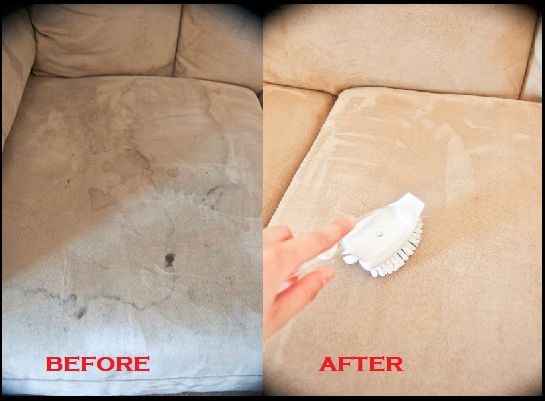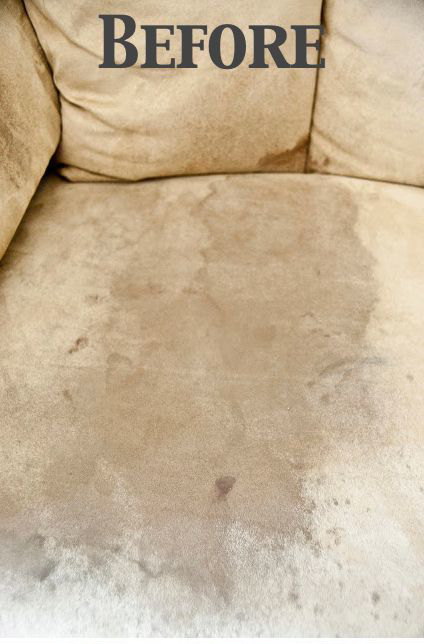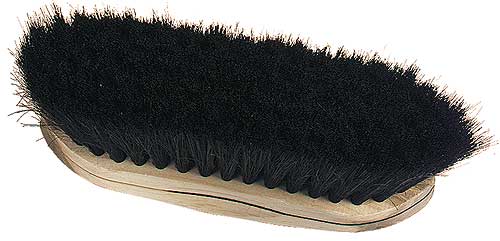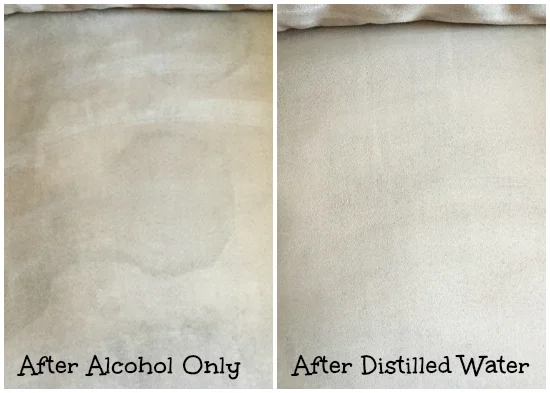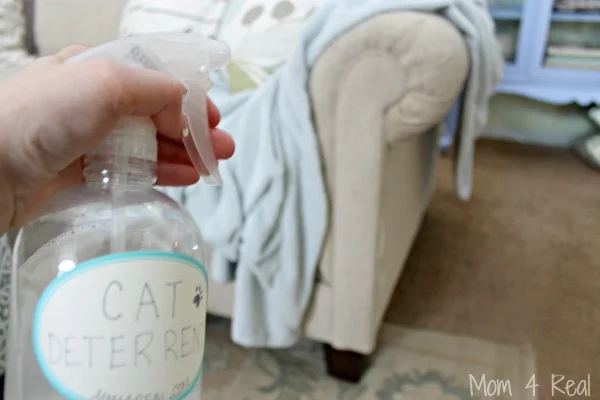
How to Clean a Microfiber Couch
Many people send in requests or questions about how to clean their microfiber couch or sofa. Microfiber isn't for everyone just like leather isn't for everyone, but you'll have to make some sacrifices in order to keep your microfiber couch clean.
Many people send in requests or questions about how to clean their microfiber couch or sofa. Microfiber isn't for everyone just like leather isn't for everyone, but you'll have to make some sacrifices in order to keep your microfiber couch clean.
What is Microfiber?
First thing is first. Let's talk about what microfiber is and why cleaning microfiber furniture is such a pain in the tuckus. Microfiber has very thin strands that can be made to look like suede or leather. This makes it an attractive fabric for sofas and couches. Microfiber also is quite durable and repels water so it tends to be suited for furniture because your home can take a beating. Furniture manufacturers and salespeople however, would like you to believe that they are impervious to stains and an indestructible investment.
Its just not true... Microfiber couches look like suede, but the fabric is made of polyester and nylon fibers. These fibers are about 100 times thinner than a human hair, so cleaning this material can be difficult. You can leave watermarks in a hurry on your brand new microfiber couch, if you're not careful. However, cleaning with solvents or laundering cushion covers gets the dirt out without the unsightly spots.
And if Frankie the dog likes to wipe his face on your couch (we know he does), then you'll be faced with the below situation.
Before you begin
What type of microfiber couch do you have? Before cleaning your microfiber couch, make sure to read its care instruction tag. Microfiber manufacturers use codes to indicate how to clean the fabric.
- W means you must use water based cleaning solution.
- S means you must use a “solvent” based cleaner
- S-W means you can use S or W type cleaners
- X means you can vacuum only (so, no water or solvent based cleaning solutions).
Never use bleach, acetone, carpet cleaner or upholstery cleaner on microfiber couches. If you are unsure about cleaning your couch yourself, schedule a consultation with a professional furniture-cleaning service.
And here's what you'll need.
- White cloth or sponge.
- Rubbing alcohol.
- Distilled water.
- Spray bottle.
- Hard bristle scrubbing brush.
- Soft bristle brush.
How to clean a microfiber couch
Your first step is to pour some rubbing alcohol into a spray bottle and spray it on the couch. Don’t be shy; spray on a liberal amount. Then, use your clean sponge or white cloth to start scrubbing.
The key here is to focus on one section at a time. It will make the job more palettable and you'll see the results of cleaning in sections. If you have visible stains (such as Frankie's drool), scrub hard until they disappear. You can always spray on more rubbing alcohol if needed. You should quickly see dirt lifting off onto your cleaning cloth or sponge.
The Aftermath.
Microfiber is finicky. Because of its fiber makeup, it will tend to harden after cleaning. This may cause streaks, runs or it may even be a bit "crisp". So what to do? The solution to that is to gently rub the hardened fabric with a soft scrub brush. You can use any type of brush really, as long as its not so abrasive that is damages your material. Pictured below is actually a horse brush! We're really looking to achieve the same result.
The special sauce...
Normally, most people would end here. There's an additional step however that proves to be useful for those who venture down the path of laboring over their own microfiber couches. Pour some distilled water into a spray bottle and spray it on the couch. It goes without saying that you need a NEW, CLEAN sponge or cloth in which to work into the couch until you can no longer see the water stains. The key here is distilled water - regular water will re-surface stains.
Allow it to dry, and then use the soft bristle brush again to loosen the fibers. Viola!
Image: www.lemonslavenderandlaundry.com
DIY Make Your Own Cat Repellent Spray
Making your own cat repellent may just be the best thing you ever do if you love your little furry companions. Most importantly, if your cat has its claws then she'll need to satisfy the natural urge to "scratch". So you might have a wonderful peice of new furniture, a wall corner or bed post or some other thing in the house that is precious and expensive to you - but princess has other ideas about it...
Deter Your Cat
Making your own cat repellent may just be the best thing you ever do if you love your little furry companions. Most importantly, if your cat has its claws then she'll need to satisfy the natural urge to "scratch". So you might have a wonderful peice of new furniture, a wall corner or bed post or some other thing in the house that is precious and expensive to you - but princess has other ideas about it...
In some cases, it can go a step further. Some cats (if left to live the "mouser" lifestyle) will take over your flower beds and garden areas as their own personal litter box. They may go as far as digging up your pride and joy.
Cats are very loveable and that can certainly cause a lot of joy in your life. But they can also become destructive. If you're spending the build of your spare time trying to eliminate cat smell off your shed, garage, the corner of your house or even the corner of a room in the house, then its time to deter them.
Cats do not intentionally harm things, it is just their nature to leave their scent and mark territory. Its usually the males that do this. Dogs do the same thing by urinating on just about everything. There are plenty of nice ways to tell your cat to "Step OFF".
Cat Repellent Sprays
You may want to try these homemade cat repellents. Not every home remedy works for every cat. You may have to experiment a little bit, but offering natural, healthy ways to ward off your cat's instinctive behavior is much safer and longer term investment than abusive scolding or chemicals.
Cats can smell (or detect odor) at about 40 times the sensitivity that we humans can. Making a natural cat repellent will rely heavily on a cat’s keen sense of smell. If you find that one recipe is not working, try one of the others. Cats are individuals with different likes and dislikes, and what smells pungent to you may just be his cup of tea.
First, get yourself clean spray bottle to earmark for kitty discipline.
Photo: Mom 4 Real Blog
Recipe 1
Vinegar. Mix some vinegar with liquid hand soap and water in equal parts. Spray, wipe or pour over areas of concern depending on whether its indoors or outdoors.
Recipe 2
Garlic, pepper, and lemon mixed with water is another deterrent. Some people will add "hot" pepper to this solution but that may cause harm to your cat as "hot" solution are not cat friendly. If you decide to do this, add a very modest amount of "hot". A little bit can go a long way. Garlic needs to be crushed very well. Then let this concoction sit for at least 24 hours until its nice and ripe. Strain off the remaining solution and away you go with a powerful cat repellent. (Possibly humans to...)
Recipe 3
Rosemary. Plant this herb near where your cat(s) is causing problems and you should him take it to the street. Rosemary is a natural cat deterrent. You can also make a solution of Rosemary extract and water to put in your spray bottle.
Recipe 4
Grow herbs. To follow recipe 3, put in citronella, rue, rosemary or garlic and chives into an herb garden. These are attractive, and are natural cat repellents.
Natural, organic DIY cat repellent spray. Photo: Mom 4 Real Blog.
Recipe 5
A liquid herbal supplement can consist of lemon juice, orange juice, cranberry juice, and rosemary extract mixed with a bit of water. This is an excellent cat deterrent.
Recipe 6
Another liquid fusion can be made by mixing the juice from a green orange and strong coffee. This has proven to be a great cat deterrent. You can also chop or grind up citrus rinds, and use coffee grounds in the soil of your beds to discourage feline visitors from the neighborhood.
Recipe 7
Citronella oil is a homemade cat repellent that many people have had success with. Citronella is best known as a mosquito repellent, but cats find the Citronella odor to be distasteful. Simply mix one part Citronella oil to four parts water and spray liberally in the troubled areas.
** Disclaimer. Some herbs such as eucalyptus and citronella can be poisonous to cats. Dried or fresh, eucalyptus is dangerous for your cat. Your cat can experience salivation, seizures, vomiting, diarrhea, confusion, and other concerning symptoms after consuming this potent houseplant. To keep your cats safe, use eucalyptus essential oil in a sealed container instead of fresh or dried plants if you have a fear of them eating the herbs.
Adding eucalyptus essential oil to your spray bottle as a cat repellent spray. Photo: Mom 4 Real Blog.
Recipe 8
Lastly, a recommendation from Mom4Real.com, suggest that the single best cat repellent is the following recipe.
Fill your spray bottle 3/4 the way up with water.
Add a few drops of clear dish liquid. It should be clear so that it does not color-stain your carpet or furniture. (This acts as a mixing agent for water and oils).
Add 10 drops each of Eucalyptus Essential Oil and Lemon Essential Oil to the spray bottle. Replace the lid and shake well.
Its simple, natural and easy to make. Your cats likely won't be bothered by this at all and neither will you. If your experiencing a problem with flies in your house or even ants, this essential oil cocktail may solve that problem to. Go green before looking to chemical or harsh behavioral correction. Your furry friends will love your for it.
Photo: Mom 4 Real Blog.
Pet Stain Clean Up
Lastly, if you have an affected area of your home that has withstood damage due to your pets, you have two options. Contact your local Color Glo franchise for fabric restoration. For extensive clean up of floors, carpets, area rugs and more, call a company like National Dusters whom specialize in Pet Stain Clean Up.


